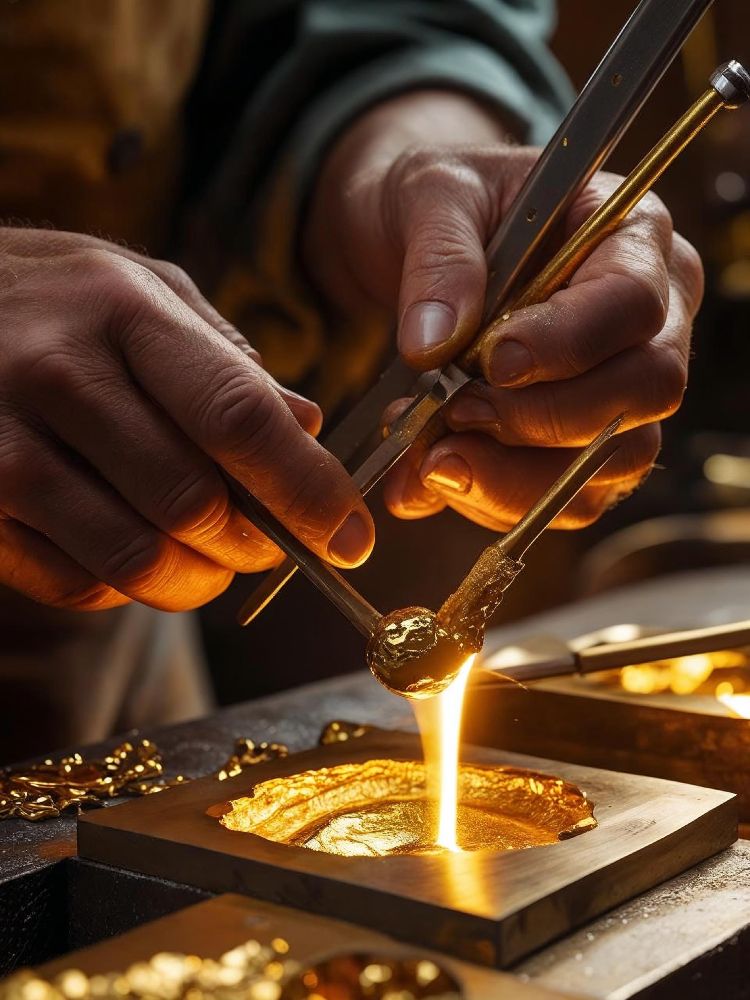Metal Mastery in Making Gold: The Art Behind Every Masterpiece

Gold has captivated human civilization for thousands of years. From ancient civilizations to modern luxury brands, this precious metal has always symbolized wealth, craftsmanship, and timeless elegance. But behind every radiant gold ring, necklace, or bracelet lies something even more valuable—true metal mastery.
Making gold jewelry isn’t just about melting and molding—it’s a precise art form that requires technical skill, creative vision, and years of experience. Here’s a closer look at what metal mastery really means in the world of goldmaking.
1. Understanding Gold as a Material
Gold is a unique metal: soft, malleable, corrosion-resistant, and incredibly lustrous. But working with it requires a deep understanding of its physical properties.
Key Characteristics:
-
High malleability: Easily shaped without breaking.
-
Low hardness: Pure gold is prone to scratching.
-
Requires alloying: Mixed with other metals (like copper, silver, or palladium) to improve strength and adjust color (e.g., rose, white, or yellow gold).
A goldsmith must know how to choose the right karat, alloy, and form for the specific piece they are crafting.
2. Mastering the Process: From Raw Gold to Finished Piece
Creating fine gold jewelry is a multi-stage journey:
a. Melting & Alloying
Pure gold (24K) is rarely used alone. Goldsmiths melt it with precise amounts of other metals to create the desired karat and hue.
b. Rolling & Shaping
The gold is then rolled into sheets or drawn into wire. Mastery here means maintaining consistent thickness and preventing work-hardening or cracking.
c. Forming Techniques
-
Forging: Shaping with hammers and stakes.
-
Raising & doming: Sculpting 3D forms from flat sheet.
-
Bending & cutting: Precision work for clean lines and symmetry.
d. Joining
Soldering and fusing techniques allow multiple parts to become one. This requires absolute control of temperature and timing.
3. Surface Perfection: Finishing and Texture
Metal mastery isn't just about structure—it’s about finish.
Techniques include:
-
Polishing: Bringing out that unmistakable golden shine.
-
Satin/brushed finishes: Offering a subtle, modern texture.
-
Hammered textures or engraving: Adding hand-crafted uniqueness.
Even the tiniest surface imperfection is visible on gold, so a true master takes great care in the final stages.
4. Precision and Patience
What separates an average jeweler from a master craftsman? The answer is patience and precision.
Whether setting stones, soldering a delicate chain, or resizing a ring, every move must be intentional. One degree too much heat, or one fraction of a millimeter off, can compromise the entire piece.
True metal mastery is about anticipating the metal’s behavior and adjusting in real time.
5. Blending Tradition and Technology
Today’s goldsmiths combine ancient techniques with modern technology to achieve levels of detail and consistency never before possible.
-
CAD and 3D printing for prototyping.
-
Laser welders for precision joining.
-
Hand-finishing to preserve the soul of artisan craftsmanship.
This balance between innovation and tradition is where metal mastery truly shines.
Final Thoughts: Gold is Easy to Love, Hard to Master
Gold may be one of the most coveted metals in the world, but mastering it is a lifelong journey. Every piece tells a story—not just of luxury, but of the hands and minds that shaped it. When you wear a piece made by a skilled goldsmith, you're wearing generations of knowledge, a deep respect for material, and the timeless beauty that only true metal mastery can create.


